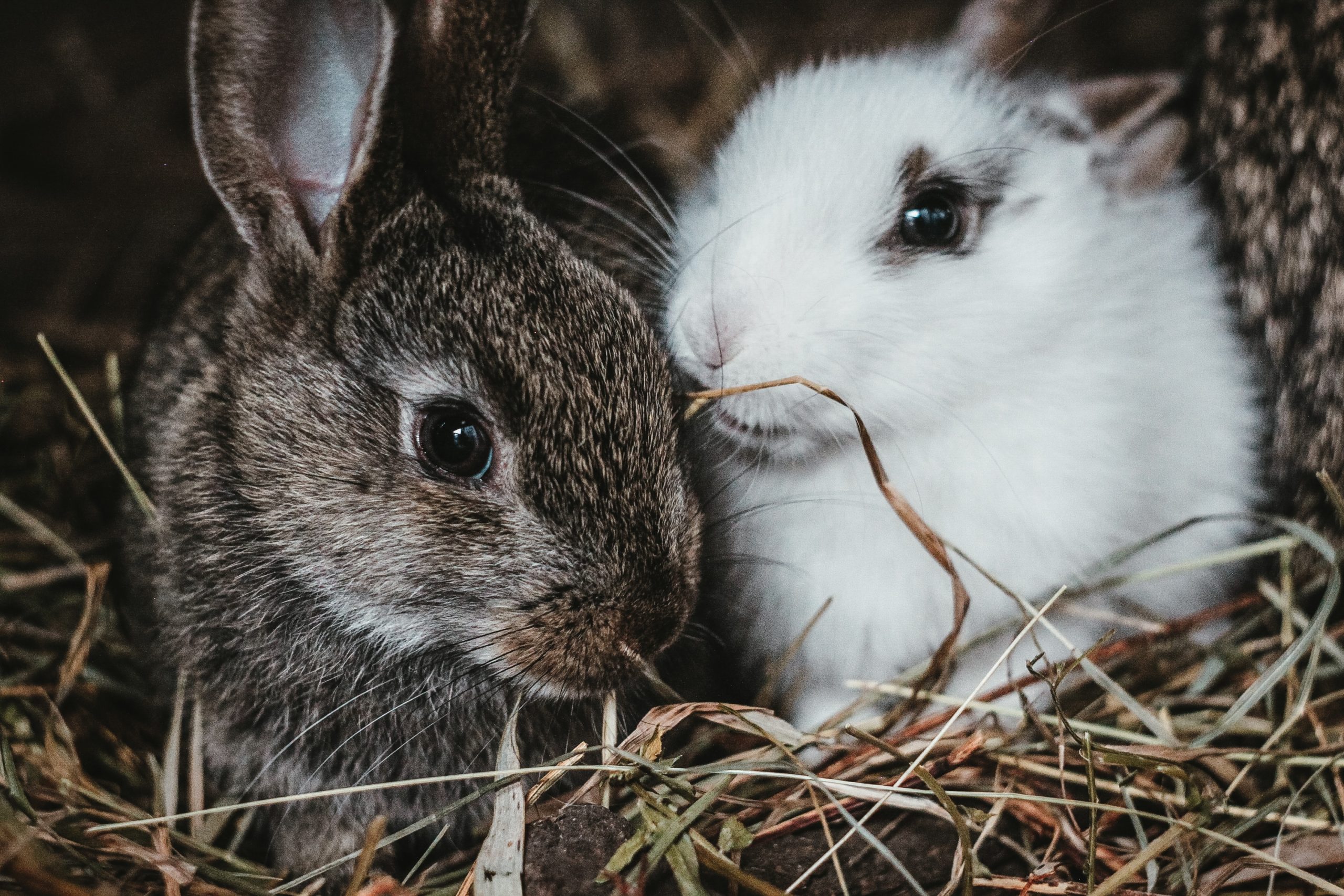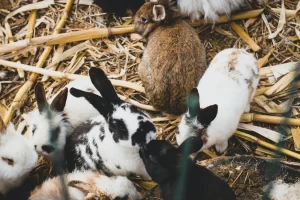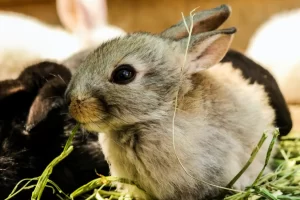Imagine finding your beloved rabbit suffering from flystrike. It’s a distressing sight, but don’t panic – you can take action at home to treat this condition.
In this article, we will guide you through the steps of understanding, recognizing, and effectively treating flystrike in rabbits. With our expert advice and simple techniques, you’ll be able to clean and disinfect the affected area, safely remove maggots, and promote healing.
Don’t let flystrike take a toll on your furry friend – let’s get started.
In This Article
- 1 Key Takeaways
- 2 Understanding Flystrike in Rabbits
- 3 Recognizing the Symptoms of Flystrike
- 4 Cleaning and Disinfecting the Affected Area
- 5 Removing Flystrike Maggots Safely
- 6 Treating the Wound and Promoting Healing
- 7 Preventing Future Flystrike Incidents
- 8 Frequently Asked Questions
- 8.1 Can Flystrike in Rabbits Be Fatal if Left Untreated?
- 8.2 Is Flystrike Contagious and Can It Spread to Other Rabbits?
- 8.3 How Long Does It Take for Maggots to Develop After a Rabbit Is Infested?
- 8.4 Can Flystrike Occur in Indoor Rabbits or Is It Only a Concern for Outdoor Rabbits?
- 8.5 Are There Any Specific Breeds of Rabbits That Are More Prone to Flystrike Than Others?
- 9 Conclusion
Key Takeaways
- Regularly inspect your rabbit for signs of flystrike, such as foul odor or matted fur.
- Clean and disinfect the affected area regularly to prevent the spread of infection.
- Act quickly and carefully to remove flystrike maggots using tweezers or a fine-toothed comb.
- Apply an antibiotic ointment to the wound and cover it with a sterile bandage.
Understanding Flystrike in Rabbits
Do you know the risks and symptoms associated with flystrike in rabbits?
Flystrike, also known as myiasis, is a serious condition that occurs when flies lay their eggs on a rabbit’s fur, which then hatch into maggots. This can lead to severe skin infections, tissue damage, and even death if left untreated.
There are several causes of flystrike in rabbits, including poor hygiene, damp bedding, and open wounds.
To prevent flystrike, it’s crucial for rabbit owners to maintain good hygiene by regularly cleaning their pets’ living areas and removing any soiled or wet bedding. Additionally, checking rabbits daily for any signs of wounds, especially in the hindquarters area, can help identify and treat potential flystrike cases early on.
Recognizing the Symptoms of Flystrike
Make sure to regularly inspect your rabbit for any signs of flystrike, such as foul odor or matted fur, as these symptoms can indicate a serious problem.
Flystrike is a common issue among rabbits, but with proper prevention measures, it can be easily avoided. To prevent flystrike, it’s crucial to keep your rabbit’s living area clean and dry, as moisture attracts flies. Regularly clean and disinfect their enclosure, and ensure that your rabbit’s fur is clean and dry. Additionally, make sure to remove any soiled bedding or droppings promptly.
Providing your rabbit with a proper diet and grooming them regularly can also help prevent flystrike. If you notice any signs of flystrike, it’s essential to seek immediate veterinary attention to prevent further complications.
Cleaning and Disinfecting the Affected Area
To effectively prevent the spread of infection, clean and disinfect the affected area regularly. By following proper cleaning techniques, you can ensure a safe and healthy environment. Here are some natural remedies you can use to clean and disinfect the affected area:
- Vinegar solution: Mix equal parts vinegar and water, then use a cloth or sponge to wipe down the area. Vinegar has antibacterial properties that can help kill germs.
- Lemon juice: Squeeze fresh lemon juice onto a cloth and wipe the area. Lemon juice is a natural disinfectant and can help remove stains and odors.
- Baking soda: Sprinkle baking soda on the affected area and let it sit for a few minutes before wiping it away. Baking soda can help absorb moisture and neutralize odors.
Remember to always wear gloves and dispose of any waste properly. By using these cleaning techniques and natural remedies, you can effectively clean and disinfect the affected area, promoting a healthier environment.
Removing Flystrike Maggots Safely
If you notice any flystrike maggots on your rabbit, it’s important to act quickly and carefully to remove them using tweezers or a fine-toothed comb.
Flystrike, also known as myiasis, is a common and potentially serious condition that occurs when flies lay their eggs on a rabbit’s fur, which then hatch into maggots that feed on the rabbit’s flesh.
To prevent flystrike, make sure your rabbit’s living area is clean and free of feces, keep their fur well-groomed and dry, and use fly repellents specifically designed for rabbits.
If your rabbit does develop flystrike, natural remedies for treating it include using hydrogen peroxide to kill the maggots and applying a soothing chamomile or tea tree oil solution to the affected area.
However, it’s always best to consult with a veterinarian for proper diagnosis and treatment of flystrike.
Treating the Wound and Promoting Healing
You can apply an antibiotic ointment to the wound and cover it with a sterile bandage to promote healing and prevent infection. This is a crucial step in wound care, as it helps create an optimal environment for the wound to heal.
In addition to these conventional methods, there are also natural remedies that can aid in the healing process. Here are three natural remedies you can consider:
- Aloe vera: Apply a small amount of pure aloe vera gel to the wound. Aloe vera has soothing and antimicrobial properties that can help reduce inflammation and prevent infection.
- Calendula oil: Gently massage a few drops of calendula oil onto the wound. Calendula has been used for centuries to promote wound healing due to its anti-inflammatory and antiseptic properties.
- Honey: Apply a thin layer of raw honey to the wound. Honey has natural antibacterial properties that can help prevent infection and promote healing.
Preventing Future Flystrike Incidents
Keep your rabbit’s living area clean and free of feces to prevent future flystrike incidents. Flystrike, a condition where flies lay eggs on a rabbit’s fur or skin, can lead to serious health issues if left untreated. Prevention is key in avoiding this problem.
Regularly clean your rabbit’s living space, removing any soiled bedding or feces. Additionally, ensure your rabbit has access to a clean and dry environment. Regular grooming is also important to keep your rabbit’s fur clean and free from any matting or soiling.
Flystrike prevention measures also include using fly repellents specifically designed for rabbits and keeping your rabbit indoors during peak fly seasons. If you suspect flystrike, it’s crucial to seek immediate veterinary attention.
Frequently Asked Questions
Can Flystrike in Rabbits Be Fatal if Left Untreated?
Flystrike in rabbits can be fatal if left untreated. Complications can arise, and the long-term effects of untreated flystrike can be severe. It is crucial to address this issue promptly to ensure the well-being of your rabbit.
Is Flystrike Contagious and Can It Spread to Other Rabbits?
Flystrike is not contagious, but it can spread to other rabbits if they’re in the same unsanitary environment. To prevent it, regularly clean and disinfect rabbit cages, and learn how to properly care for your bunnies.
How Long Does It Take for Maggots to Develop After a Rabbit Is Infested?
After a rabbit is infested, it takes about 24 hours for maggots to develop. To prevent flystrike, regularly check your rabbit for any signs of infestation and keep their living area clean and free from flies.
Can Flystrike Occur in Indoor Rabbits or Is It Only a Concern for Outdoor Rabbits?
Preventing flystrike in indoor rabbits is essential to their well-being. Although it is more common in outdoor rabbits, indoor rabbits can still be at risk. Knowing how to detect flystrike early is crucial for timely treatment.
Are There Any Specific Breeds of Rabbits That Are More Prone to Flystrike Than Others?
Some rabbit breeds, like the Angora and the Lionhead, are more prone to flystrike than others. To prevent this condition, make sure to regularly check your rabbit’s fur and keep their living area clean and dry.
Conclusion
So, there you have it! Now you’re equipped with all the knowledge and tools to treat flystrike in rabbits at home.
Remember, prevention is key, so be sure to keep your bunnies clean and regularly check for any signs of flystrike.
But if by chance you find yourself in a sticky situation, don’t panic. Just follow these steps and you’ll be well on your way to helping your furry friend heal.
Happy bunny care!





